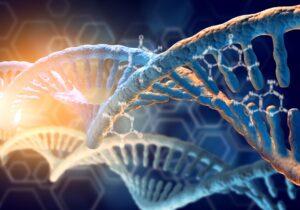Amino Acids in Exercise and Sport
by Vanita Dahia
Sports Nutrition
Sports nutrition with enhanced additives in protein powders are growing exponentially in the young sportsperson with increasing demands in endurance, muscle build and optimal recovery.
Amino acids with high carb loading is used in debilitated patients and in palliative care.
Why take Amino Acids in Sports?
Most sport protein formulae contain a blend of branch chained amino acids (BCAA’s) – leucine, isoleucine, and valine blended together with enhanced or activated amino acids such as AAKG, (Arginine alpha ketoglutarate), or creatine to name a few, key players in amino acid metabolism.
BCAA’s are essential amino acids as they constitute about 35% of muscle tissue and need to be supplemented as they cannot be produced or synthesized by the body.
Amino acids play a crucial role in exercise and sport for several reasons:
Build and Repair Muscle
- Amino acids form part of each muscle fibre and are the building blocks of protein, which is essential for muscle growth and repair. Muscle tissue breaks down with exercise and strength training. It is for this reason that amino acids need to be replenished, particularly essential amino acids which the body can’t produce.
Energy Source
- Some amino acids, particularly Branched-Chain Amino Acids (BCAAs) like leucine, isoleucine, and valine, can be used by muscles for energy during exercise, especially endurance activities [2]. This can help spare glycogen, your body’s primary energy source stored in muscles and liver.
Stamina and endurance
- BCAAs may also help reduce exercise-induced fatigue and muscle soreness. They might achieve this by competing with tryptophan, an amino acid that contributes to fatigue, for uptake into the brain.
Improve Recovery, muscle soreness
- Amino acid intake can support faster recovery after exercise by promoting muscle protein synthesis and reducing muscle breakdown. This is especially important for athletes who train intensely and frequently.
Burn Fat
- Some Amino acids are involved in fat metabolism and support weight loss via muscle preservation and improve satiety.
- L-Carnitine helps transport fatty acids into the mitochondria, the cell’s powerhouse, where they can be burned for energy. Arginine may increase fat burning and improve insulin sensitivity, which can aid in weight management.
Types of Amino Acids Important for Exercise
- Essential Amino Acids (EAAs): Your body can’t produce these, so getting them from your diet is crucial. Leucine, a BCAA, plays a key role in stimulating muscle protein synthesis
- Branched-Chain Amino Acids (BCAAs): These specific EAAs (leucine, isoleucine, valine) are particularly important for muscle protein metabolism during exercise
Amino Acids in the Diet
- Athletes and individuals engaging in intense exercise may need a slightly higher protein intake compared to sedentary people. This can be achieved through a balanced diet rich in protein sources like meat, fish, eggs, dairy, legumes, and some nuts and seeds.
- Amino acid supplements are popular among athletes, but research on their effectiveness is mixed. Consuming a complete protein source like those mentioned above can often provide all the necessary amino acids
Why take amino acids?
Three reasons why amino acids are beneficial for exercise:
- Build energy supply
BCAA intake prior to a workout will prime the body to provide sufficient energy for a more intense workout. BCAA increases uptake of essential amino acid tryptophan and reduce the synthesis and release of serotonin, which may delay fatigue during a longer or harder workout. - Build muscle
During a workout, muscles build and breakdown, and in time, fat breakdown to enable muscle tone build and fat loss, sculpturing the body.
The rate of muscle breakdown can be slowed during exercise with leucine, an amino acid which stimulates protein synthesis and muscle tissue growth. So leucine essentially primes the body preparing for muscle build and recover after a workout.
Taking BCAA can also increase the level of Dopamine seen with an increase of 2.5 times normal level of phenylalanine. Dopamine is a reward neurotransmitter which make you feel motivated and satisfied when working out. - Assists with muscle soreness after exercise and prevents muscle damage
BCAA taken before exercise can reduce delayed onset muscle soreness (DOMS) as much as 20%. Intense exercise has the potential to damage muscle and is reflected in an increase in CK (creatinine kinase) and lactate dehydrogenase (LDH), indicators of muscle damage.In a study by Coombes et al, the intake of BCAA’s prior to a workout significantly decreased the post-exercise values of these enzymes, suggesting decreased muscle damage.
Testing for Amino Acids
Whilst we are concentrating the value of BCAA in exercise, it is equally important to balance all amino acids (essential and non-essential) in sports nutrition. Amino acids do not work independently, they need important vitamin co-factors to stimulate synthesis, utilization and metabolism of amino acids.
The levels of Amino Acids can be tested in a blood sample and should ideally be supplemented based on your amino acid status.
References
Newsholme, E. A., Acworth, I. N., & Blomstrand, E. (1987). Amino acids, brain neurotransmitters and a functional link between muscle and brain that is important in sustained exercise. Advances in Myochemistry, 1, 127-133.
Tipton, K. D., Rasmussen, B. B., Miller, S. L., Wolf, S. E., Owens-Stovall, S. K., Petrini, B. E., & Wolfe, R. R. (2001).
Shimomura, Y., Inaguma, A., Watanabe, S., Yamamoto, Y., Muramatsu, Y., Bajotto, G& Mawatari, K. (2010). Branched-chain amino acid supplementation before squat exercise and delayed-onset muscle soreness. International Journal of Sport Nutrition, 20(3), 236.
Coombes, J. S., & McNaughton, L. S. (2000). Effects of branched-chain amino acid supplementation on serum creatine kinase and lactate dehydrogenase after prolonged exercise. Journal of Sports Medicine and Physical Fitness, 40(3), 240. June 5, 2018




